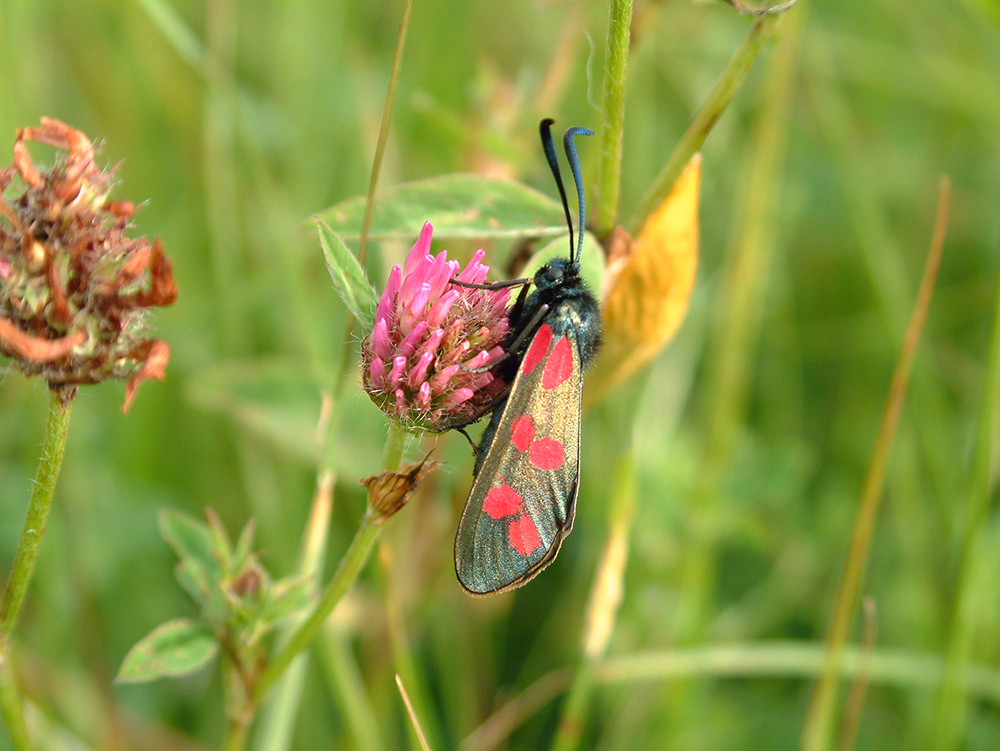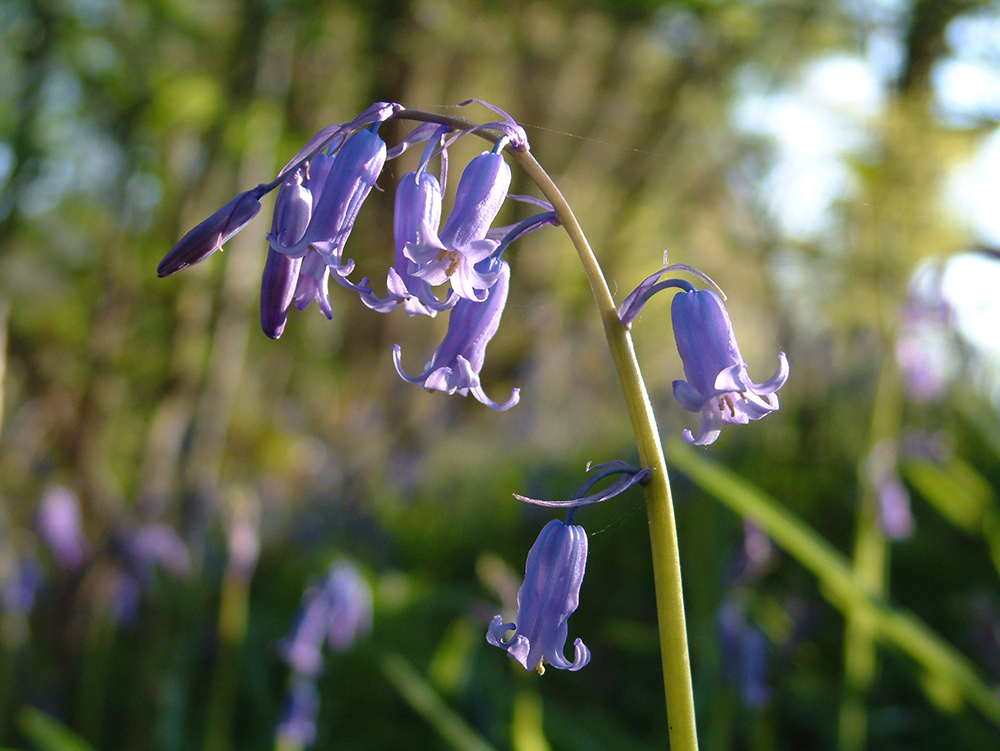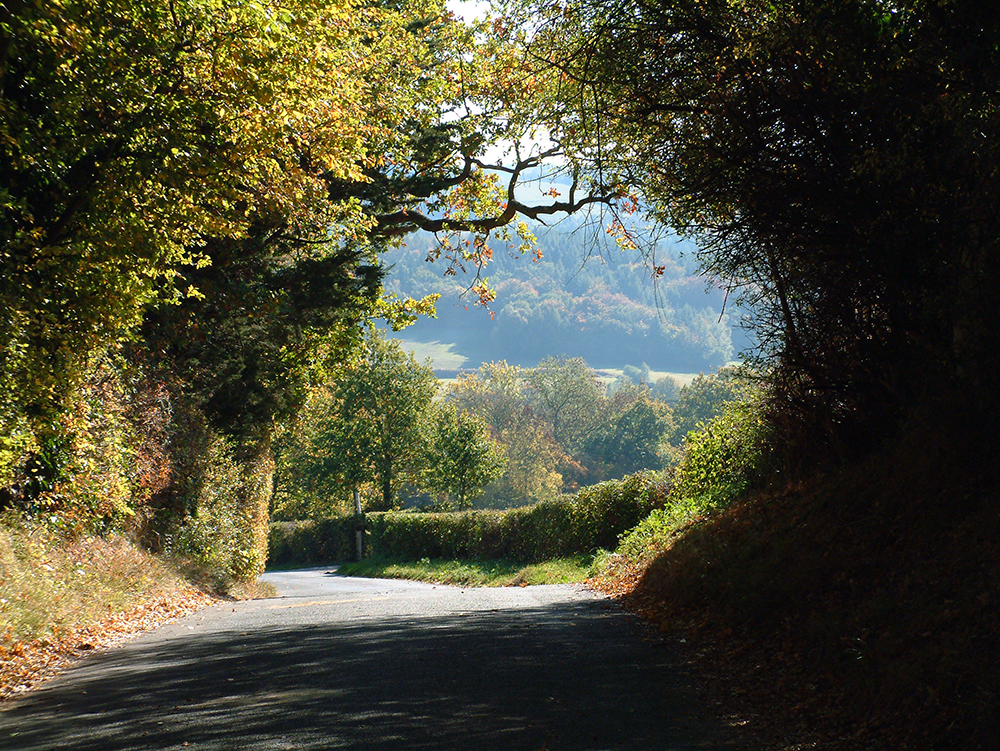environmental SCIENTIST | Are we measuring what matters? | June 2025
Sally Marsh ponders whether we can apply metrics to the beauty of nature.
Metrics have come to dominate environmental policy in the 21st century, but it has not always been like this. In 1949, UK legislation sought to preserve and enhance natural beauty across extensive areas of countryside.1 These areas became our National Landscapes (previously Areas of Outstanding Natural Beauty or AONBs) and National Parks, which now cover 25 per cent of England and Wales. They were not ranked or rated for their beauty; all were considered equally beautiful in their own way. Their nature-rich countryside, managed by traditional human-scale agriculture, was celebrated by society as places where current and future generations could seek and experience the beauty of nature. Their protection from harm was seen as a moral duty.
Government at the time assumed that this harmony between land management and nature would persist and continue to co-create colourful meadows, moorland, wetland and woodland rich in wildlife and alive with the sounds of birds and insects. Seventy-five years later, it appears that implementation of the legislation has been only partially successful: protecting cultural landscape character by shielding these areas from the worst excesses of late 20th-century urbanisation but failing to halt harm to nature from industrial-scale agriculture and lax regulation of air, soil and water quality. The government insists that setting measurable targets, rather than system or behavioural change, will solve the problem. But the history of natural beauty measurement suggests that more attention to theory will be needed if metrics are to play a useful role.
Measuring natural beauty
A desire to measure natural beauty arose in the 1960s and 70s when quantitative evaluation methods were developed for abstract values (such as beauty) to trade them with commodities (such as timber) in land-use planning decisions. The shift in focus was prompted by a more systematic approach to planning and increasing dominance of economic theories, which equated value with price, together with public policy management beliefs that setting performance targets would result in increased public value.
Daniel and Boster’s scenic beauty estimation method was developed in 1976 as an early technique to measure natural beauty.2 It is based on participants rating scenes and is still in use today. Scenic beauty assessment reached its zenith with a Warwick Business School study in 2017 that asked people to rate over 200,000 images of Great Britain on a scale of 1–10 (not scenic to very scenic).3 Analysis of results against the image qualities prompted media headlines such as ‘computer trained to determine what makes places beautiful’, suggesting that the study could underpin better settlement planning.4
Scenic beauty assessments are part of a genre of aesthetic preference and landscape quality studies, which do not necessarily share a consistent aesthetic theory or agreed set of definitions and terminology.5 While there are undoubtedly useful outputs from such studies, it is difficult to claim that they tell us anything meaningful about beauty as an aesthetic value. Beauty is not something that lends itself to easy measurement.6 As soon as it is ranked or rated it ceases to be about beauty and, instead, tends to become an indication of preference for a different combination of qualities, such as place or image composition.
Preference studies are common in natural beauty research, with ratings choices usually made in an indoor setting looking at a framed image from a fixed distance. Such studies are cheaper, and control of variables is easier than in the real world, but this limits the information that can be gained. Sense perception tends to be restricted to the visual, snap judgements (e.g. like/dislike) are common and the role that emotional engagement with nature plays is overlooked. Researchers have sought to correlate preference with formal qualities such as land-cover patterns or visual or ecological condition, but this is only meaningful if we assume an evolutionary origin for aesthetic preference.7 Such an origin remains contested, with cultural and individual experiences offered as alternative factors.8

Credit: © High Weald NL Partnership
The importance of aesthetic theory
If we wish to measure the beauty of nature (or landscape) in the real world, the experience is not one that can be captured by a static image. Aesthetic theory helps us understand the difference.9 A natural beauty experience involves a dynamic relationship between perceiver and object. The perceiver is an integral part of the object, not an external spectator, and this holds true even if we are standing on a mountain turning our attention to a specific view.10 ‘Natural (nature)’ – or ‘landscape/scenic’ – are descriptors that encompass and describe the object our senses and cognition engage with in a beauty experience. What distinguishes such experiences as aesthetic ones is the role of positive emotions – described by Immanuel Kant as disinterested pleasure. This is pleasure in nature not linked to any utilitarian purpose such as trading nature for another benefit.11,12
In real-world environments, natural beauty is often a prolonged aesthetic experience mediated by movement and exposed to the effects of temporal changes such as light and weather.13 Like any perceptual experience, beauty starts with engagement of all the senses. As we move, the boundary of what we notice moves with us as the body senses changes in the environment through the skin, constantly adjusting and re-adjusting the detail and scope of what we see and hear.
Neuroscience describes beauty as an emergent mental state arising from the interaction of three neutral systems: sensory–motor (sensation, perception, motor system); emotion–valuation (reward, emotion, wanting/liking), and knowledge–meaning (expertise, context and culture).14 What aspect of the object we engage with can differ between moments and between people sharing the same moments. We suspect that the richer an environment is in wildlife and bio-abundance, the greater the opportunities for a deeper natural beauty experience. But the difference in baselines between individuals, cultures, generations and environments make this a difficult subject to test.

Credit: © High Weald NL Partnership
Models for measuring natural beauty
The complexity of natural beauty suggests that if we want to quantify it, we need to create an approximation – a simplified model – underpinned by aesthetic theory. Such a model would need to take account of both the object’s qualities (the characteristics of nature or landscape as a dynamic system) and the emotions and experience of individuals immersed in it. Inevitably, as a simplification of the real world, a model is likely to exclude critical factors, foreground some factors over others and obscure attributes that cannot be easily categorised for measurement. To give confidence to decision-makers, an explanatory narrative will be necessary to help users understand the conceptual framework underpinning the choices made, how the model relates to the real world and where uncertainty lies.15
In practice, the tricky task of navigating theory, testing outputs against the real world, and acknowledging assumptions and uncertainties tends to be ignored in what is an increasingly time- and resource-poor policy environment. Today, the main model used to take account of natural beauty in policy rests on reframing natural beauty as landscape that is interpreted as either a large site or static scene. Landscape assessment (described as a systematising of aesthetics) overtook scenic beauty assessment as a planning tool in the 1980s.16
Six qualities developed to attribute landscape value to a character area unit in landscape assessment are now used to underpin a range of natural beauty assessments and metrics: scenic quality, natural heritage, cultural heritage, landscape quality, relative wildness and tranquillity.17 These assessment methods and metrics include natural beauty evaluation criteria, indicators for monitoring natural beauty outcomes, and a predictive map and metric to identify potential areas rich in natural beauty for future designations.18,19,20 Perhaps it was inevitable that the government body responsible for natural beauty would adopt an off-the-shelf method. Yet gradually, these six factors have acquired an authority without any explanatory narrative that links them to aesthetic theory. Questions such as why these six factors and not others and why some factors are weighted more heavily than others remain unanswered.
The continuing challenge of natural beauty measurement is demonstrated by the paucity of data provided by government to support Goal 10 of its Environment Improvement Plan: ‘Enhancing beauty, heritage and engagement with the natural environment’.21 Data are provided on visits to green spaces, pro-environmental behaviours and frequency of time spent outside – presumably proxy indicators – but no information is offered on people’s experience of beauty in nature.
In the absence of a consistent approach to measuring natural beauty, other established methods have been drawn upon to fill gaps, each bringing its own set of strengths and weaknesses. For landscape and visual impact assessment, commonly used to assess harm to natural beauty in planning decisions, the key weakness is visual bias. Biodiversity net gain, which uses a government metric to justify contributions from developers to nature recovery targets under the Protected Landscapes Targets and Outcomes Framework, remains untested against real-world biodiversity and fails to take account of alternative scenarios, such as what habitats might become if left alone.22
Currently, all these models ignore or downplay the dynamic and multi-scaler nature of the object in natural beauty and, in their stand-alone substitution for natural beauty, exclude information on people’s experiences of it. An emotional response to nature tends to be distrusted in laypeople and decision-makers in favour of data and expert judgement, which are considered more objective. However, in natural beauty, emotion and the complex interplay between cognition and knowledge are as important as the physical object, suggesting that there is no such thing as an objective assessor.23

Credit: © High Weald NL Partnership
Alternatives to measurement
If targets and metrics fail to capture the breadth and wonder of natural beauty, is there an alternative? We could choose not to measure it. Instead, we could, as the writer and philosopher Aldo Leopold proposed, judge our actions against whether they ‘preserve the integrity, stability and beauty of the biotic community’.24 We could explore other ways to take account of it in policy, drawing on new information such as soundscape data to inform our actions, or work with other disciplines to bring a richer and deeper understanding of people’s experiences of natural beauty to policy. Ethnographic work with fell runners in the Lake District, corpus analysis of online first-person nature experiences, and art, dance, music and ritual-based expression of the beauty of nature can all contribute.25,26
While we continue to create a more meaningful dashboard of indicators and information to help consider natural beauty in policy decisions, perhaps it is also worth remembering that the wonderful landscapes celebrated for their natural beauty were not shaped by metrics. Their natural beauty was a by-product of their function over centuries as a working countryside producing food and raw materials. Policies to support people to engage emotionally with nature and move to a modern circular economy, managing these landscapes regeneratively and productively in a non-industrial, low-carbon, chemical-free way, may achieve more for nature and natural beauty than the current focus on measured targets.27
Dr Sally Marsh is a landscape ecologist and Fellow of the Landscape Institute. She has been Co-Director of the High Weald National Landscape Partnership for over 30 years and is a member of Natural England’s Landscape Advisory Panel.
References
- UK Public General Acts (1949) National Parks and Access to the Countryside Act. https://www.legislation.gov.uk/ukpga/Geo6/12-13-14/97 (Accessed: 2 May 2025).
- Daniel, T.C. and Boster, R.S. (1976) Measuring Landscape Esthetics: The Scenic Beauty Estimation Method. USDA Forest Service, Research Paper RM-167, US Department of Agriculture. https://www.fs.usda.gov/rm/pubs_rm/rm_rp167.pdf (Accessed: 2 May 2025).
- Seresinhe, C.I., Preis, T. and Moat, H.S. (2017) Quantifying scenic areas using crowdsourced data. Environment and Planning B: Urban Analytics and City Science, 45 (3), pp. 567–582. https://doi.org/10.1177/0265813516687302 (Accessed: 2 May 2025).
- Sample, I. (2017) Beauty Spot or landscape blot? Computer trained to judge scenery, The Guardian, 19 July. https://www.theguardian.com/science/2017/jul/19/beauty-spot-or-landscape... (Accessed: 2 May 2025).
- Bourassa, S.C. (1991) The Aesthetics of Landscape. London: Belhaven Press.
- Born, T. (1974) Measuring natural beauty: the problem of quantification. Progressive Agriculture in Arizona, 26 (5), pp. 14–16. http://hdl.handle.net/10150/300538 (Accessed: 2 May 2025).
- Appleton, J. (1984) Prospects and refuges re-visited. Landscape Journal, 3 (2), pp. 91–103. https://doi.org/10.3368/lj.3.2.91 (Accessed: 2 May 2025).
- Nassauer, J.I. (1995) Culture and changing landscape structure. Landscape Ecology, 4 (10), pp. 229–237. https://doi.org/10.1007/BF00129257 (Accessed: 2 May 2025).
- Jenkins, V. (2020) In defence of natural beauty: aesthetic obligation and the law on the
designation of protected landscapes in England and Wales. Environmental Law Review, 22 (1), pp. 7–24. https://doi.org/10.1177/1461452919900345 (Accessed: 2 May 2025). - Berleant, A. (2012) The art in knowing a landscape. Diogenes, 59 (1–2), pp. 52–62. https://doi.org/10.1177/0392192112469320 (Accessed: 2 May 2025).
- Kant, I. (1951) Critique of Judgement. Translated by J.H. Bernard. New York: Hafner Publishing Co.
- Brady, E. (2003) Aesthetics of the Natural Environment. Edinburgh: Edinburgh University Press.
- Ingold, T. (2000) The Perception of the Environment. Essays on Livelihood, Dwelling and Skill. London and New York: Routledge.
- Chatterjee, A. and Vartanian, O. (2016) Neuroscience of aesthetics. Annals of the New York Academy of Sciences, 1369 (1), pp. 172–194. https://doi.org/10.1111/nyas.13035 (Accessed: 2 May 2025).
- Thompson, E. (2022) Escape from Model Land: How Mathematical Models Can Lead Us Astray and What We Can Do About It. London: Basic Books.
- Price, C. (2017) Landscape Economics, 2nd edn. Switzerland: Palgrave Macmillan.
- Swanwick, C. (2002) Landscape Character Assessment: Guidance for England and Scotland. Report to the Countryside Agency and Scottish Natural Heritage.
- Land Use Consultants (2022) All-England strategic landscape mapping tool. Final Report. Natural England. https://www.landuse.co.uk/projects/all-england-strategic-landscape-mapping/ (Accessed: 12 May 2025).
- Bingham, L. (2014) Framework for Monitoring Environmental Outcomes in Protected Landscapes. Natural England Research Reports, NERR055. https://publications.naturalengland.org.uk/file/6707256733204480 (Accessed: 2 May 2025).
- Natural England (2011) Guidance for Assessing Landscapes for Designation as National Park or Area of Outstanding Natural Beauty. https://consult.defra.gov.uk/natural-england/suffolk-coast-and-heaths-ao... (Accessed: 2 May 2025).
- Office for Environmental Protection (2025) Progress in improving the natural environment in England 2023–2024. Speech by Dame Glenys Stacey, Chair of the OEP, 16 January. https://www.theoep.org.uk/news/progress-improving-natural-environment-en... (Accessed: 2 May 2025).
- Department for Environment, Food & Rural Affairs (2024) Protected Landscapes Targets and Outcomes Framework. https://www.gov.uk/government/publications/protected-landscapes-targets-... (Accessed: 5 May 2025).
- Jacques, D. (2021) Neuroaesthetics and landscape appreciation. Landscape Research, 46 (1), pp. 116–127. https://doi.org/10.1080/01426397.2020.1832204 (Accessed: 2 May 2025).
- Leopold, A. (1949) A Sand County Almanac. New York: Oxford University Press.
- Koblet, O. and Purves, R.S. (2020) From online texts to landscape character assessment: collecting and analysing first-person landscape perception computationally. Landscape and Urban Planning, 197 (article: 103757). https://doi.org/10.1016/j.landurbplan.2020.103757 (Accessed: 2 May 2025).
- Nettleton, S. (2015) Fell runners and walking walls: towards a sociology of living landscapes and aesthetic atmospheres as an alternative to a Lakeland picturesque. British Journal of Sociology, 66 (4), pp. 759–778. https://doi.org/10.1111/1468-4446.12146 (Accessed: 2 May 2025).
- Lumber, R., Richardson, M. and Sheffield, D. (2017) Beyond knowing nature: contact, emotion, compassion, meaning, and beauty are pathways to nature connection. PLoS ONE, 12 (5), article: e0177186. https://doi.org/10.1371/journal.pone.0177186 (Accessed: 2 May 2025).
Header image © Viv Blakey | via High Weald NL Partnership





